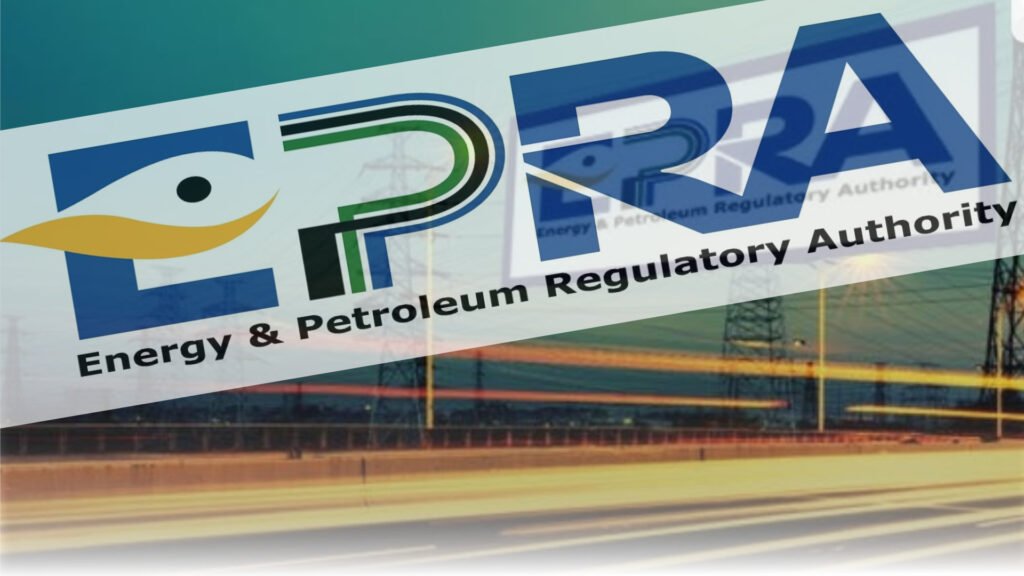Petrol Down KSh 0.79, Diesel KSh 0.11, and Kerosene KSh 0.80
Introduction
Fuel prices are one of the most closely monitored costs in Kenya, directly influencing transport, manufacturing, agriculture, and household budgets. Each month, the Energy and Petroleum Regulatory Authority (EPRA) reviews the maximum pump prices for super petrol, diesel, and kerosene based on global oil movements, exchange rates, and taxation.
In the latest September 2025 review, EPRA announced a slight drop in fuel prices for all three products. Super petrol decreased by KSh 0.79 per litre, diesel by KSh 0.11 per litre, and kerosene by KSh 0.80 per litre. Although modest, the reduction is welcome news to consumers and businesses facing high costs of living.
For companies like Heavycraft Supplies Ltd, a leading dealer in Heavy Fuel Oil (HFO) and Industrial Diesel Oil (IDO) in Kenya, these changes are significant. They shape industrial operating costs and influence decisions in sectors dependent on furnace oil, industrial diesel, and petroleum products.
EPRA September 2025 Fuel Price Announcement
According to EPRA’s notice effective from 15th September 2025 to 14th October 2025:
- Super petrol maximum pump price in Nairobi is now KSh 184.52 per litre
- Diesel is KSh 171.47 per litre
- Kerosene is KSh 154.78 per litre
The adjustment reflects changes in international petroleum costs. The average landed cost of imported super petrol dropped by 0.46%, diesel by 3.38%, and kerosene by 2.93% compared to July 2025.
These changes directly explain why fuel prices in Kenya edged slightly lower.
Breakdown of Fuel Prices in Nairobi
EPRA’s cost breakdown for Nairobi shows how fuel prices are calculated:
| Component | Super Petrol (KSh/Litre) | Diesel (KSh/Litre) | Kerosene (KSh/Litre) |
|---|---|---|---|
| Landed Cost | 80.40 | 80.14 | 79.23 |
| Pipeline + Depot + Delivery | 4.67 | 4.38 | 4.34 |
| Importer + Dealer Margins | 17.39 | 17.31 | 17.24 |
| Taxes & Levies | 82.04 | 69.63 | 55.54 |
| Stabilization (Deficit/Surplus) | 0.00 | 0.00 | (1.39) |
| Retail Price in Nairobi | 184.52 | 171.47 | 154.78 |
The largest portion of fuel prices comes from taxes and levies, which account for more than 40% of the final pump price.
Towns with Different Fuel Prices
Fuel prices vary across Kenyan towns due to transportation, storage, and logistical costs. In the September 2025 review:
- Nairobi: Petrol 184.52 | Diesel 171.47 | Kerosene 154.78
- Thika: Petrol 184.16 | Diesel 171.11 | Kerosene 154.42
- Murang’a: Petrol 185.05 | Diesel 172.00 | Kerosene 155.31
- Nanyuki: Petrol 187.49 | Diesel 174.44 | Kerosene 157.75
Remote towns like Mandera, Moyale, and Wajir typically record the highest pump prices due to transport challenges. Coastal towns such as Mombasa and Malindi enjoy lower prices since they are closer to import entry points.
Why Fuel Prices Matter
Fuel prices affect nearly every sector:
- Transport – Matatu fares, logistics companies, and long-distance haulers pass changes to consumers.
- Manufacturing – Industries using boilers, furnaces, and generators depend on steady energy costs.
- Agriculture – Diesel-powered irrigation, harvesters, and tractors see operating costs fluctuate.
- Households – Kerosene remains vital for cooking and lighting in rural areas.
Even a small reduction in fuel prices can ease inflationary pressures in the economy.
How Motorists Can Adapt to Fuel Prices in Kenya
For motorists, fuel prices remain one of the biggest day-to-day expenses. Adapting smartly can save money and reduce pressure from frequent EPRA reviews. Some effective strategies include:
- Carpooling or ride-sharing to cut down on individual fuel consumption.
- Driving efficiently by avoiding unnecessary idling, reducing aggressive acceleration, and maintaining steady speeds.
- Regular car maintenance such as timely oil changes, clean air filters, and proper tire inflation to improve fuel economy.
- Planning routes in advance to avoid heavy traffic, which burns extra fuel.
- Using fuel-saving apps that help track consumption and guide drivers to cheaper filling stations.
By adopting these measures, Kenyan motorists can cushion themselves from the frequent swings in fuel prices and manage their transport budgets more effectively.
Heavy Fuel Oil (HFO) and Industrial Diesel Oil (IDO): The Industrial Side
While much public focus is on petrol and diesel at the pump, industries rely heavily on HFO (furnace oil) and IDO (industrial diesel oil).
- HFO is widely used in heavy industries, cement plants, and shipping. It is cost-effective but requires specialized equipment.
- IDO is a middle distillate fuel used in boilers, generators, and industrial machinery where reliable energy is essential.
Heavycraft Supplies Ltd is among Kenya’s most trusted dealers in both fuels. The company ensures timely delivery, competitive pricing, and uncompromising quality, supporting businesses across construction, manufacturing, agriculture, and logistics.
By monitoring EPRA’s reviews, industries can forecast energy costs better and partner with reliable suppliers like Heavycraft Supplies Ltd to secure stable operations.
Global Influences on Kenya’s Fuel Prices
Fuel prices in Kenya are tied closely to international dynamics. Key influences include:
- Crude oil prices – Brent crude fluctuations directly affect landed costs.
- Exchange rates – A weaker shilling makes imports more expensive.
- Shipping costs – Global freight rates affect the final landed cost per cubic metre.
- Geopolitical tensions – Conflicts in oil-producing regions quickly ripple into higher prices.
In August 2025, global prices softened slightly, leading to lower landed costs. This explains why September’s EPRA review reflected a marginal reduction.
Consumer Impact of the September Review
For ordinary Kenyans, the slight drop in fuel prices will:
- Lower matatu and bus fare pressures (though operators often delay passing savings).
- Reduce costs for logistics companies transporting goods across the country.
- Ease inflation on essential goods by trimming supply chain expenses.
- Offer households some relief, especially those dependent on kerosene.
For industries, the review provides a stable outlook, helping in budget forecasts and reducing immediate cost escalation fears.
What This Means for Businesses
Businesses operating in Kenya should take note of three key implications:
- Planning Ahead – Tracking EPRA reviews helps anticipate cost fluctuations.
- Energy Mix – Firms should diversify into HFO and IDO for stable supply.
- Reliable Suppliers – Partnering with Heavycraft Supplies Ltd ensures competitive fuel sourcing even when global markets are volatile.
The Future of Fuel Prices in Kenya
Although September 2025 saw a slight decline, future reviews may bring increases depending on global oil dynamics. The government’s emphasis on renewable energy will help in the long run, but petroleum remains central to Kenya’s economy.
Industries, transporters, and households must continue adapting to fuel price fluctuations by adopting efficiency measures and engaging trusted suppliers.
Conclusion
The September 2025 EPRA review provided a slight relief in fuel prices, with petrol, diesel, and kerosene dropping marginally. While the reductions may appear small, they have a ripple effect across transport, manufacturing, agriculture, and household budgets.
For industries relying on Heavy Fuel Oil (HFO) and Industrial Diesel Oil (IDO), the review underscores the importance of tracking EPRA’s pricing trends and working with dependable suppliers.
Heavycraft Supplies Ltd stands out as a reliable partner for businesses in Kenya, offering timely delivery, competitive pricing, and high-quality HFO and IDO. With global markets uncertain, having a trusted fuel partner ensures operational stability and efficiency.
Fuel prices will remain a key driver of Kenya’s economy, and every adjustment, even a slight drop, matters.

